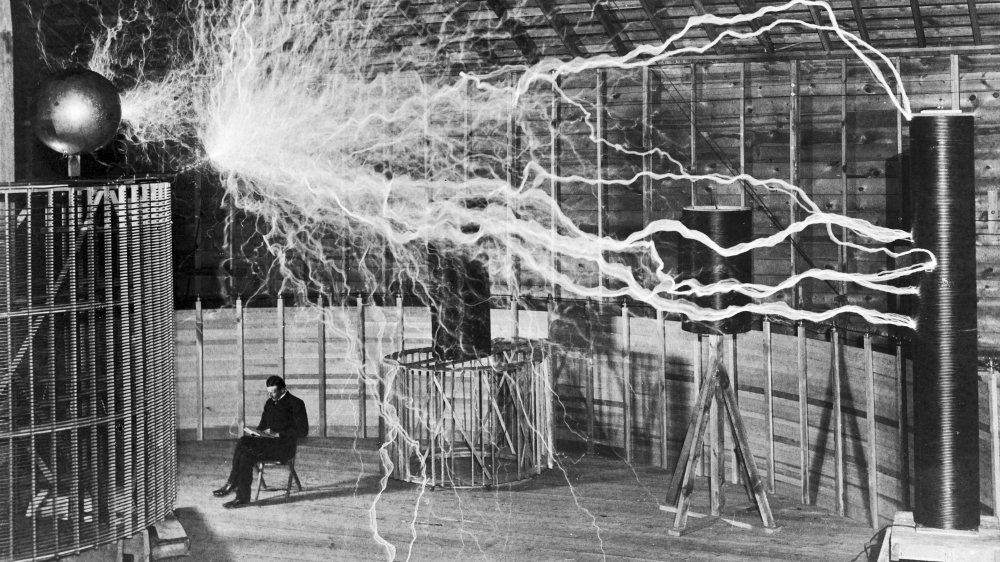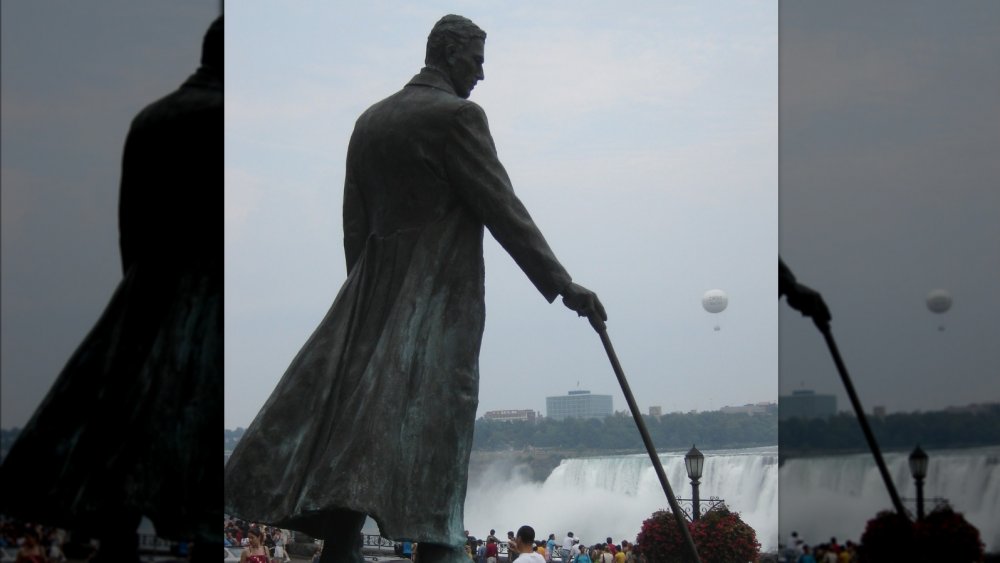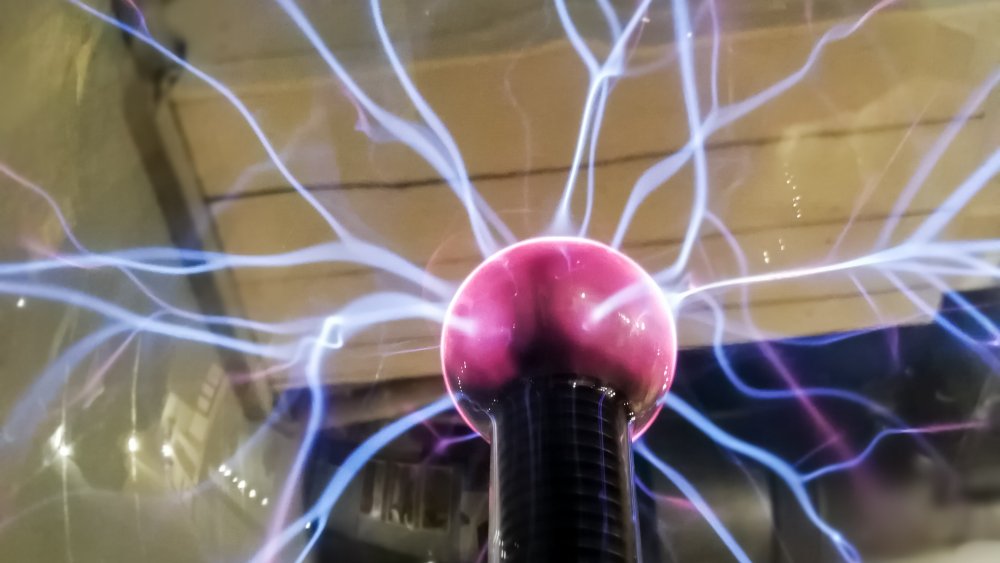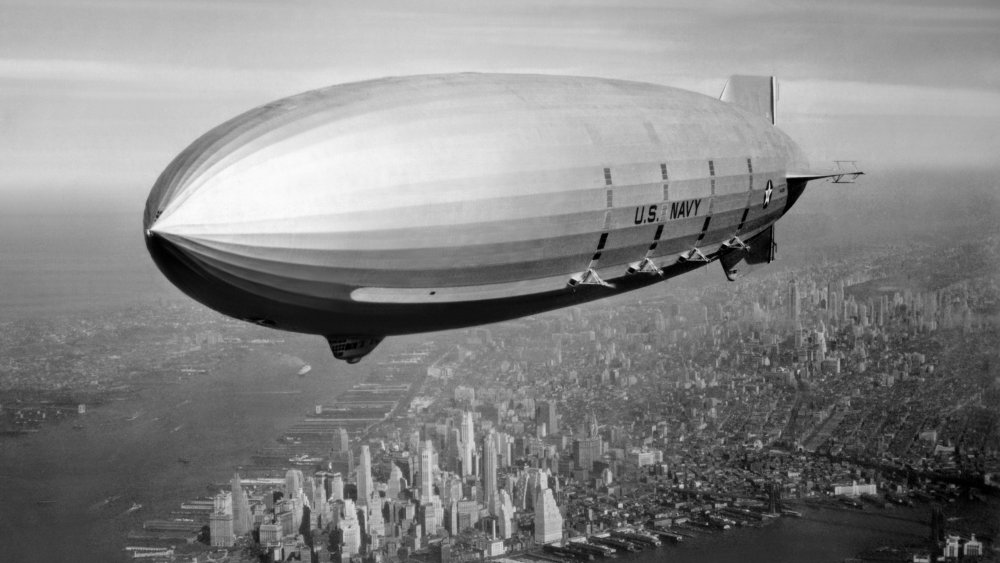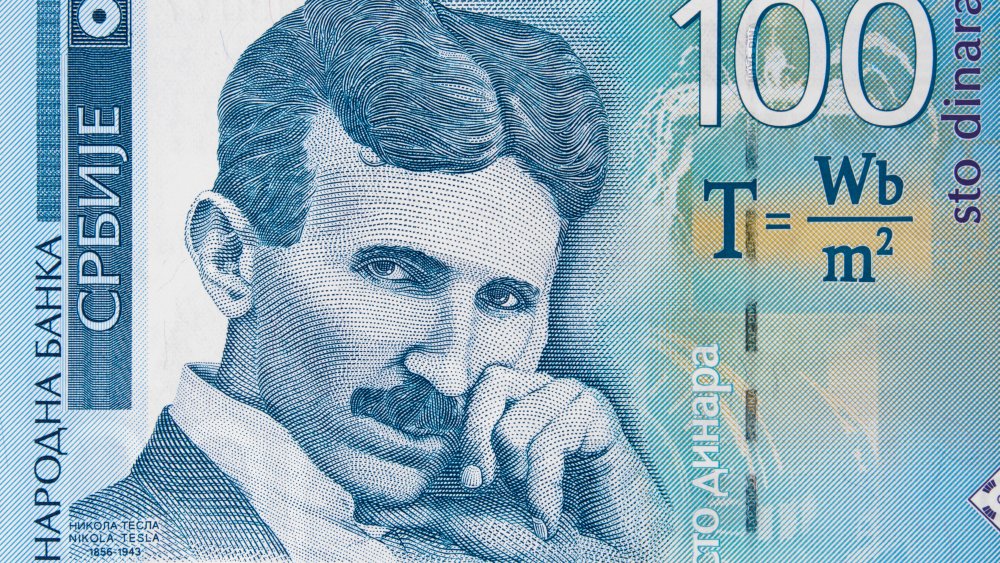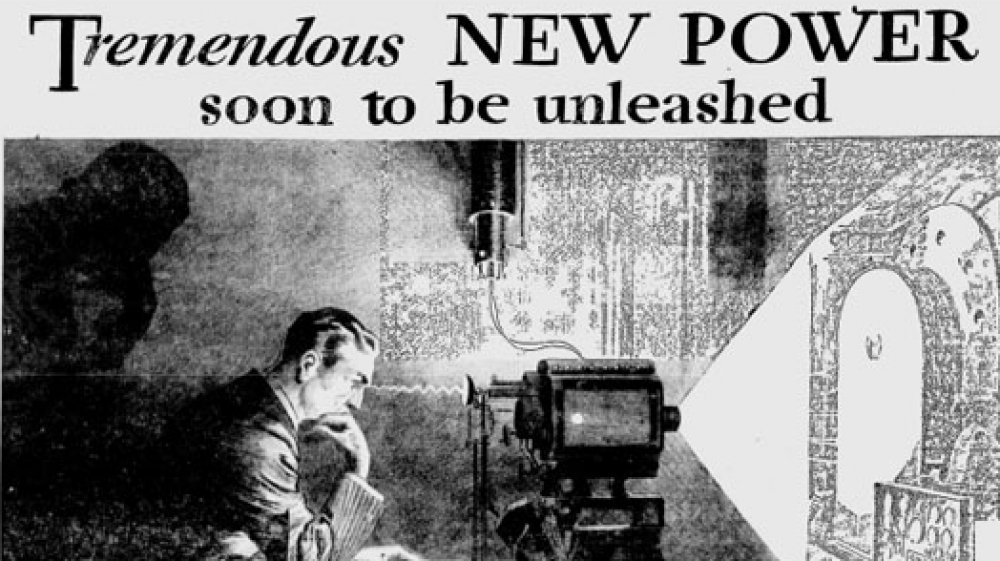The Inventions Nikola Tesla Never Completed
If you were to list the greatest inventors of all time, Nikola Tesla would probably crack the Top 10. After many decades of having his legacy eclipsed by businessmen like Thomas Edison and George Westinghouse, the Serbian-American inventor has seen a surge of attention in modern culture, from movies to internet memes. You're no doubt familiar with Tesla, at least by name. You probably know him as that guy who did stuff with electricity. But how many of his inventions can you actually name?
If you want to learn about all the cool things Nikola Tesla built, this article unfortunately isn't for you. Instead, we'll be focusing on all the fascinating devices that Tesla came up with yet never actually completed in his lifetime. Many of Tesla's greatest contributions to science came from his ideas, not necessarily the things that he was actually able to build. As you'll see, many of Tesla's designs would ultimately lay the foundation for the technologies that we have today. Others ... well, we're fortunate that some of the others were never built.
Tesla envisioned a 'death beam' that could end all wars
One of Tesla's most famous non-inventions was his hypothetical "death beam." According to PBS, Tesla viewed war as a problem with a technological solution. To Tesla, the right kind of weapon could usher in a peaceful era of mutually assured destruction, and offer immense defensive capabilities to every nation. After years of research, Tesla believed that he could design such a weapon.
In 1934, the New York Times reported that the 78-year-old Tesla had invented a "Death Beam." According to the article, Tesla's vacuum-based device could send "concentrated beams of particles through the free air, of such tremendous energy that they will bring down a fleet of 10,000 enemy airplanes at a distance of 250 miles." Speaking to the Times, Tesla argued that this weapon would make war impossible, as it offered every country an impenetrable barrier of defense — a "peace beam," if you will.
Tesla spent the 1930s looking for sponsors who would finance the construction of the device. When he found no takers, a frustrated Tesla mailed diagrams of the weapon to governments across Europe and North America. The death beam received some attention from the Soviet Union, but the project was ultimately a flop. According to All That's Interesting, Tesla would later assert in 1937 that he had built a working model of the device. There's no evidence that this was true, however, and the claim is probably the result of Tesla's later mental decline.
Tesla worked on long-range, wireless energy transfer
Today, the idea of wirelessly charging your phone is still pretty exciting. But in the early 1900s, Nikola Tesla had much bigger dreams. One of the central goals of Tesla's research was to find a way to transmit energy wirelessly across long distances. As Gizmodo reports, Tesla had some early success with wireless energy transfer through his experiments with radio and microwaves, as well as his "Tesla coils." The Week reports that one of Tesla's demonstrations at the 1893 World's Fair demonstrated that light bulbs could be lit up from a distance using the process of "electrodynamic induction."
But Tesla's real goal was to set up a network which could transmit large amounts of energy across vast distances, potentially spreading power across the globe, or at least the United States. To begin this endeavor, per History, Tesla constructed the 185-foot "Wardenclyffe Tower" in Long Island, New York. The tower was financed by American financier J.P. Morgan, who supported Tesla's research into telecommunications. But Morgan later resisted Tesla's electricity-transmission scheme (perhaps because it threatened his own businesses), and pulled the funding. Tesla was unable to find anyone else to finance his research, and had to dismantle Wardenclyffe Tower in 1917.
Today, as Live Science tells us, researchers are still interested in the potential to transmit electricity through the air. But the research isn't particularly promising, and only extremely short-range energy transfer (like the wireless charging of cell phones) is practical right now.
Tesla hoped to build more advanced airships
Back in Tesla's time, airships were exciting. Until the Hindenburg disaster in 1937 proved that airships aren't particularly safe, many people believed that the airship might be the transport mechanism of the future, surpassing even the airplane. Tesla himself was quite fascinated by airships, but he saw plenty of room for improvement.
Per History, Tesla wrote an article for a 1919 issue of Reconstruction magazine, in which he described his design for a new airship. Tesla's airship would have been far superior to any in existence, travelling eight miles above Earth's surface at a speed around 1,000 miles per hour. (New York to London would be a mere three-hour ride.) How could Tesla's airship be so efficient? Through electricity, of course. Building on his theory of wireless energy transfer, Tesla believed that ground-based power plants could beam electricity to airships in mid-flight, eliminating the need for airships to carry their own fuel. With enough power plants, a massive network of electricity could power airships across the globe. According to Gizmodo, Tesla also suggested that his airships could draw power from the atmosphere itself.
As cool as it sounds, Tesla's airship design never got off the ground — pun intended. Besides the inherent difficulty of wireless energy transfer, electricity and airships don't mix; per Britannica, an electric spark is probably what caused the Hindenburg to catch fire. Today, 21st-century travelers are stuck with boring, old airplanes.
Tesla envisioned a future full of robots and automation
If you read 20th-century predictions about the 21st century, you'll notice that they often suggested that future humans would live in luxury while robots did all the work. Like his contemporaries, Nikola Tesla had a similar vision for the future, one in which all dangerous and laborious tasks would be carried out remotely, or by robots themselves. But unlike many theorists, Tesla actually worked to make it happen.
Per The Week, Tesla's first foray into robotics was when he designed and built a radio-controlled boat in 1898. Tesla was able to control the small boat remotely, much like a modern drone, making it a major leap forward for the field of robotics. With that initial success, Tesla started to plan out a future where everything would be automated. Per the Serbian Journal of Electrical Engineering, Tesla had ideas ranging from automated factories to robotic companions for humans. In particular, Tesla believed that future technology would heavily rely on autonomous systems — like the kind we see in self-driving cars today. Including Teslas.
Although Tesla's ideas were too technologically advanced for him to develop in his day, his predictions were prescient. While human labor is still extremely real in the 21st-century, automation is becoming increasingly commonplace — but not always for the positive reasons that Tesla had imagined.
Tesla wanted to build a device that could project our thoughts like movies
One of the final inventions Tesla designed was particularly unusual: the "thought camera." Per Live Science, Tesla first described the invention during an interview with the Kansas City Journal-Post in 1933. "In 1893, while engaged in certain investigations," Tesla said, "I became convinced that a definite image formed in thought, must by reflex action, produce a corresponding image on the retina, which might be read by a suitable apparatus."
In other words, Tesla believed that when a person has a thought, their brain displays an image of that thought on the retina of their eye. Picture an apple, and your retina will produce an image of an apple. Given this assumption, Tesla asserted that he could build a device to photograph that retinal image and display it on a screen for all to see. That does sound pretty exciting, albeit a bit personal. The only problem? That's not how human cognition works. At all. When we have a thought in our mind, no corresponding image is produced on our eyes.
Tesla's understanding of cognition was certainly lacking, and it's good that he stuck to electrical engineering instead. That said, modern researchers have indeed attempted to "view" people's thoughts by studying their brain activity, though not their eyes. Could a machine akin to Tesla's "thought camera" become a reality one day? For privacy's sake, we hope not.
